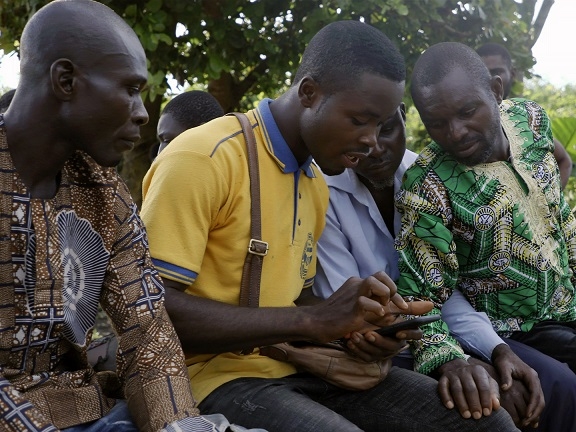
 Last year was a watershed moment in the history of the internet. It was the first full year when more than half of the world’s population — 4.1 billion people — got online.
Last year was a watershed moment in the history of the internet. It was the first full year when more than half of the world’s population — 4.1 billion people — got online.
Reaching 4.1 billion people online is a monumental achievement, but now comes the hard part. More than 3.5 billion people remain unconnected to the internet and the opportunities it provides to strengthen communities, give people a voice and create economic impact.
The Inclusive Internet Index
The Inclusive Internet Index benchmarks countries on the internet’s availability, affordability, relevance and the readiness of people to use it. Now in its fourth year, the Index covers 100 countries, representing 91% of the world’s population and 96% of global GDP. The Index is accompanied by the 2020 Value of the Internet Survey, to understand how the internet is used and perceived.
Last year’s Index found that the rate of growth of internet access in low-income countries had slowed significantly. This troubling trend continued in this year’s Index with internet access in low-income countries increasing by only 3.8%. In addition, on average, only 9.9% of households in low-income countries have access to the internet, compared with 88.5% in rich countries.
Key Findings from the 2020 Index
Making progress in middle-income countries
Although connectivity growth has slowed in the lowest-income countries, performance in the world’s middle-income countries has continually improved. Encouragingly, household connectivity in lower-middle income countries grew by nearly 12% in the past year and has grown by 65% since 2014.
Mobile data provides a path to affordable connectivity
Mobile connectivity has become more affordable and more accessible. This is a strong indicator that mobile operators have established viable business models to invest in bringing connectivity to traditionally underserved communities. Across low-income countries, where mobile connectivity is the predominant means to internet access, prepaid mobile plans now cost the equivalent of 11.5% of monthly GNI per capita, considerably more affordable than fixed options (140.1% of income), but still higher than the benchmark of 1GB of data for no more than 2% of monthly income. Mobile connectivity has also become more accessible: 4G coverage grew in 54 countries and now covers 31.2% of low-income and 64.7% of lower-middle income countries.
The gender gap remains high
While progress has been made, women still have less access to the internet than men. Across Index countries, men are 13% more likely than women to have access to the internet (down 3% from last year), and the gender gap is a remarkable 34.5% in low-income countries. This is even more concerning as the survey found that women are more likely to use, and are more dependent on, the internet for engaging in the digital economy.
Access to the internet is transforming finance, particularly in areas of the world where traditional banking infrastructure has long excluded marginalized populations. The majority of survey respondents in Latin America, Asia and Sub-Saharan Africa (57%, 55% and 53%, respectively) credit the internet with expanding their financial independence. In Sub-Saharan Africa, 62% of survey respondents use a mobile phone to check account balances, transfer money or make payments.
Work has increasingly gone online
The internet is no longer just a handy tool, it has improved career prospects and opened up more economic opportunities. 68% of respondents from low-income countries have seen their career prospects improve because of the internet.
Time for Action
The role the internet plays in the modern economy underscores the need to bring internet connectivity to those who live without it. However, the challenges that come with connecting the next 3.5 billion people are complex, and will require a continued evolution of policy, technology and business models.
Every stakeholder has a role to play. While the tech industry plays a significant role in closing the digital divide, innovation in government policy can have an equally significant impact. Many governments have started to think beyond legacy telecommunications regulation to allow for new and innovative business models, which in turn spur market entry by non-traditional players that bring investment and new solutions.
For example, the Peruvian Congress created the Rural Mobile Infrastructure Operator in the mobile services market that prompted new partnerships and investment from existing players like Telefonica, and newer players like Facebook. As a result, more than 6,000 rural communities have internet connectivity for the first time.
This is one example of how Facebook is working with partners around the world to find new ways to bring fast, reliable internet to those without it.
Written By Robert Pepper, Head of Global Connectivity Policy and Planning, Facebook
The Inclusive Internet Index is produced annually by The Economist Intelligence Unit and commissioned by Facebook.
